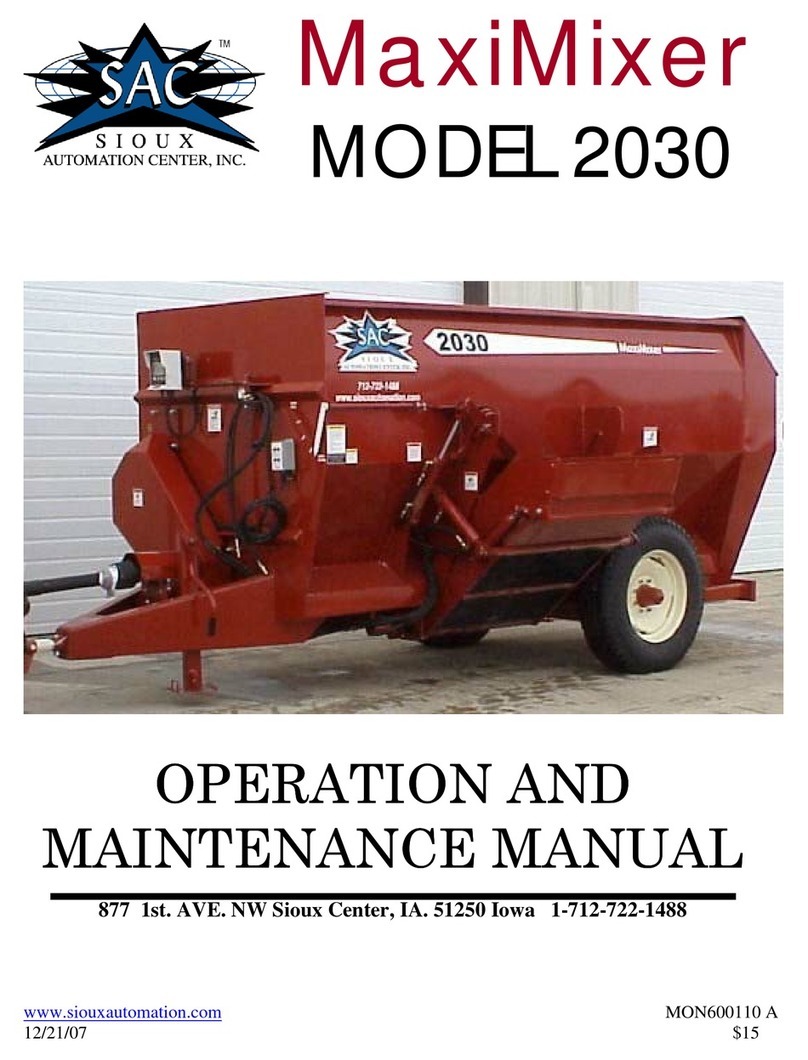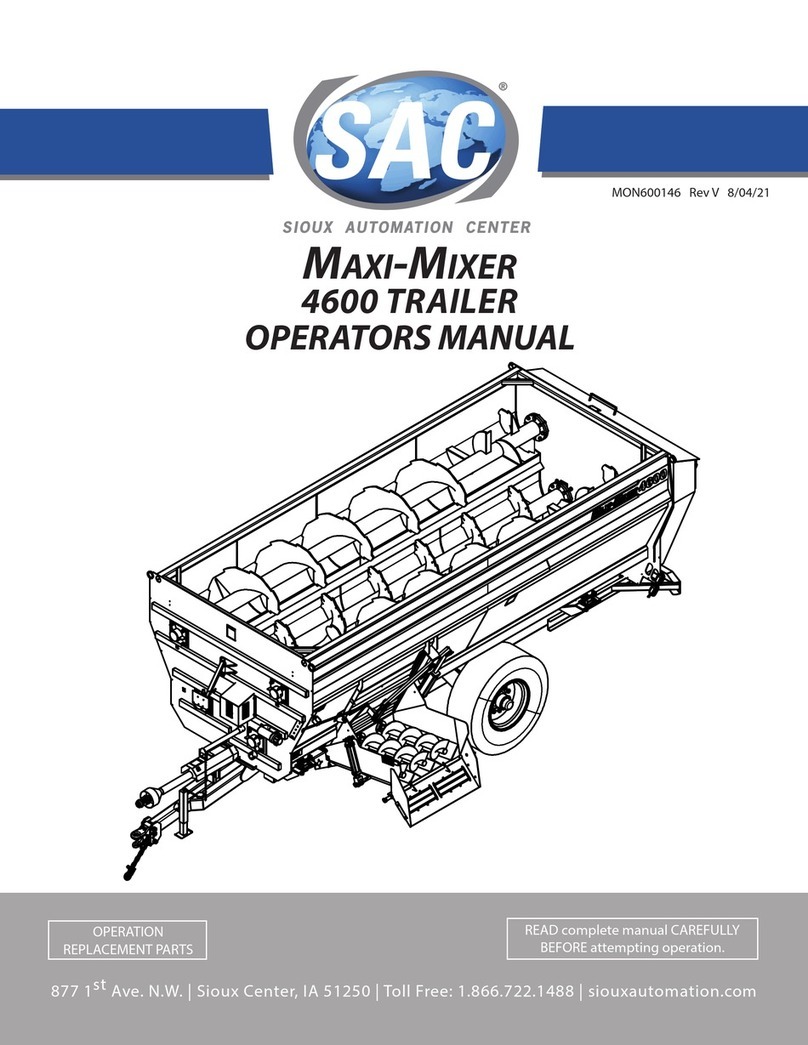
3
WARNING! ALL WORK TO INSTALL THE BAG SHOULD BE
DONE FROM THE GROUND & BY STEPS ON AXLE. DO NOT
CLIMB ON THE ROTO-PRESS. CLIMBING ON UNIT MAY
RESULT IN INJURY OR DEATH.
2. a. Winch the trolley\bag lift (if so equipped), pulling it along on both sides while standing
on the ground and lower to approximately 3’ off the ground. Note: 3 or more people
should be present at this point.
b. If the ROTO-PRESS is not equipped with a bag boom, follow the instructions as
outlined, except the bag will have to be manually lifted over the tunnel.
3. Position the box containing the proper size bag for your bagger behind the bag lift. Making
sure the arrow is toward the machine. Cut the straps around the box and remove the top
portion, and discard. Unfold the bottom portion of the remaining box. Remove the (2) blue
straps that are holding the bag together. Making sure the black or inner side is toward the
machine, have one person on each side of the bag; take a flap, lift and lay the top halves out
and stretch the entire bag flat. Two (2) people should put their arms between the top flaps and
put the bag around the bag lift. Remember to position the bag so the bars and lettering used to
measure the stretch of bag are easily reached (approximately 3’ to 4’ from ground).
4. Put the bag around and under bottom of the shroud making sure that the bottom bag folds
come off first. Then winch the bag lift up and move trolley\bag lift back over the shroud. 10ft.
Units only: Remove the locking pin from the bag lift support and raise it to the UP position,
then replace the locking pins. Repositioning trolley\bag lift over the bag support, and lower
onto supports. Caution: Do not over tighten bag lift cable as to bow bag lift ends. Be
careful not to pinch the bag.
5. Using the two (2) blue straps cut earlier and the bottom of the box (to protect the bag from
sliding on the ground), lift and place around bottom position of bag, slide the cardboard so
that the flaps will just go up on to the apron. Then slide the bottom of the bag on the box
and onto the bag apron. Make sure the bag is to the inside of the apron support. Raise the
bag lift and roll it forward all the way to the front, sliding the bottom of the bag along on to
the bag apron. Slide the cardboard just off the pan and discard.
6. Cut the remaining straps and remove them, being careful not to cut the bag. Carefully pull the
inside of layer of the bag off with a gentle tugging action. Do not pull the rest of the bag off of
the bag lift. Pull the bag off to 6 feet behind the machine. With one person on each side, pull
the main part of the bag out and forward on the apron. This will get the wrinkles out and avoid
getting the bag caught between the bag apron and the machine.





























